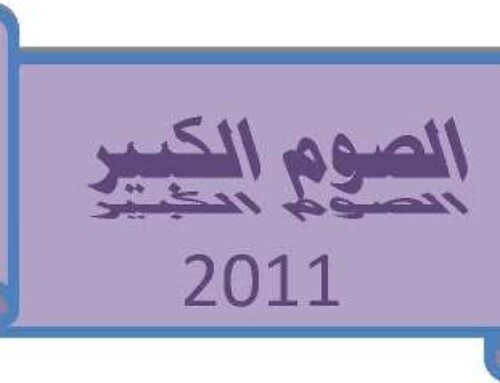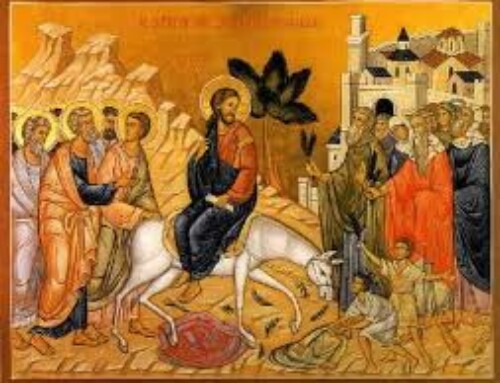Word Magazine February 1977 Page 12
PLANNING FOR GREAT LENT
IN THE CHURCH SCHOOL
By John Boojamra
Great Lent is rapidly approaching (February 21) and this is perhaps a good opportunity to consider some possible ways in which the church school might encourage the observance of this period as a time of preparation.
Lent has only one object — Easter or the Resurrection of our Lord. In this sense it is a preparation for something beyond itself. Unhappily, preparation implies postponing or putting something off and this delay is not terribly easy to make real to a so-called NOW generation which seeks immediate satisfaction and immediate answers. Nonetheless the church school teacher must help the student to answer the questions “where is lent taking us?” and, more immediately, “how might we share in the Lenten journey?” The teacher’s presentation of the Lenten journey must, therefore, emphasize both the long range goal and the immediate and daily satisfaction of a struggle well-fought.
Lent is a period during which the Church calls on us to do more and to do less — more prayer, more worship, more good works; less T.V., less eating, less entertaining. In a real sense we are asked to slow our lives down so that we might open them up more fully to the opportunities God presents us to be with Him. All of the extras that the Church prescribes for this period — prayers, services, charity, fasting — can be presented to the students for their immediate attention and so satisfy this need for NOWness. In this latter category the teacher might emphasize the personal, as well as the communal, nature of the Lenten preparation. Not only are we called to worship at longer and more frequent services but to fast (individually) and do good works (individually). Hence, there are four areas to stress — the long range and the short range nature of lent and the personal and communal nature of lent.
Lenten preparation might be encouraged in three specific areas — liturgical participation, fasting, and service.
There is a distinct change in the number, nature, length, and even color of the Lenten services.
Most notably there are simply more services; the Akathist services and the Presanctified liturgies are examples of this and all students should be encouraged to participate at these weekly services. In addition, the biblical lessons of the Sunday services might be gone over in detail, especially with the older students. The teacher might effectively start with the moral lessons of the three Sundays preceding lent. Be careful that all of the lessons are presented within a context that children at different age levels can relate to. With younger children, the teacher might emphasize the visible changes in the church building as in the liturgical colors and actually relate these to the changes in the natural world about them — the appearance of the robins, the flowering of the early daffodils, etc. The older children and youth group members might be encouraged to sponsor special discussion groups after the Friday evening services and perhaps a modest pot-luck dinner after the Presanctified Liturgy.
Children at all ages can be encouraged to initiate changes in their social and moral behavior by sharing in service projects — visiting hospitals, assisting older members of the parish in getting to church. Whatever they undertake, it should involve their giving something of themselves. With younger children the theory of sharing and giving to others need not be gone into. Rather the teacher should just encourage them to initiate modest projects or suggest that they agree among themselves to secretly perform kindnesses every day of lent for some one other than a member of their family, but without telling that person about it. The children will love the prospect of keeping a secret from their parents! All projects should have the reasonable expectation of producing immediate satisfaction as, for instance, seeing the visible pleasure of their parents when they do certain household chores willingly. The mite box is okay, but collecting money (usually mommy’s or daddy’s) is singularly unexciting. More than this can be done.
Fasting has been part of the Church’s life and the life of Christians since the very beginning. It is a fundamental part of an Orthodox understanding of life and preparation. Every major feast is preceded by a fast. The point to be made to the students in encouraging them to fast is that they must produce some visible change in their eating habits. Fasting is concerned not so much with the quantity (how much?) or the quality (what?), but the regularity of whatever degree of fasting they decide upon. With older children, it might be valuable to outline the fasting rules of the Church and allow the students to find their own pace within the Church’s rules. Again, emphasize regularity and exhausting their limits; always ask if they have chosen the maximum of their own potential.
In closing then, I would remind the teachers of emphasize the communal and personal nature of the Lenten period as well as the future goal (Easter) and the immediate ways of participation daily. For further reading I would like to suggest the following books:
Great Lent by Father Alexander Schmemann
The Passion of Christ by Vesselin Kesich
Holy Week by Father Alexander Schmemann
The Art of Prayer an Orthodox anthology
All of these works are available from St. Vladimir’s Seminary Bookstore, 575 Scarsdalle Road, Tuckahoe, New York 10707.



